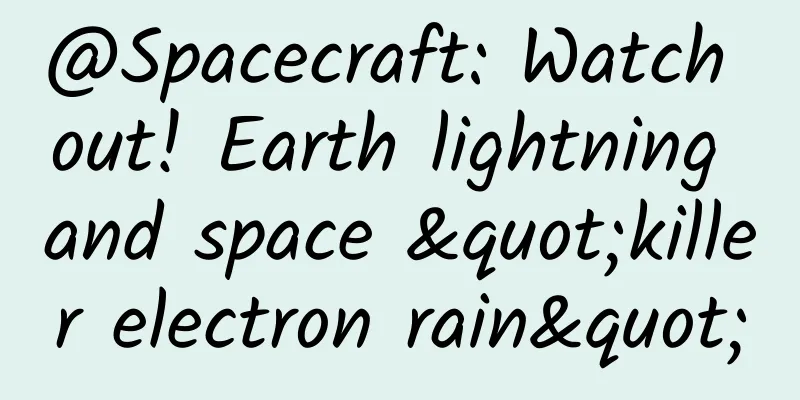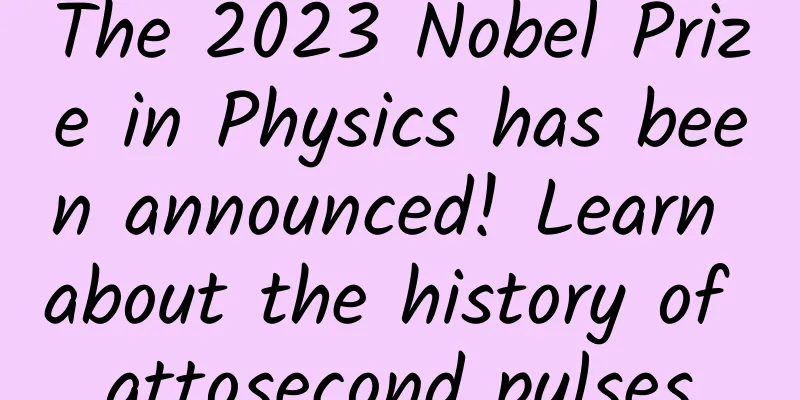@Spacecraft: Watch out! Earth lightning and space "killer electron rain"

|
Author: Huang Xianghong Duan Yuechu In recent years, scientists have made groundbreaking new discoveries about the interaction between Earth's weather and the space environment. A study published in the December 2, 2024 issue of Scientific American magazine revealed how lightning strikes in the Earth's atmosphere can trigger high-powered "killer electron rain" in low-Earth orbit. This discovery breaks the scientists' previous understanding that such high-energy electrons only appear in Earth's distant outer radiation belt. "Killer electrons" refer to high-energy electrons located in the Earth's radiation belts. They have enough energy to pose a serious threat to spacecraft. These electrons are usually located in the Van Allen radiation belts and can penetrate the surface materials of spacecraft, causing material degradation, damaging electronic devices, and even causing single-particle effects, thus affecting the normal operation of spacecraft. "These high-energy particles are harmful to both spacecraft and humans in space," said Lauren Bloom, an astrophysicist at the University of Colorado Boulder. "Knowing when high-energy electrons appear in the inner radiation belt will help us take steps to avoid damage." Max Feinland, the lead author of the study, was analyzing data from NASA's SAMPEX mission when he discovered an anomaly: a rapid surge in high-energy electron precipitation between 1996 and 2006. Further research showed that these high-energy electron precipitations were closely related to lightning activity in the Earth's atmosphere. The researchers compared the microburst data with data from the National Lightning Detection Network and found that the bursts in the inner radiation belt did coincide with lightning activity. The electromagnetic waves released by lightning rise from the atmosphere to the Earth's magnetic field lines and enter the inner radiation belt region with enough energy to knock high-energy electrons out of the magnetic field confinement. Steven Morley, a space weather scientist at Los Alamos National Laboratory, believes that this discovery is highly convincing because it establishes a link between lightning activity and the precipitation of high-energy electrons in the inner radiation belt. However, due to data limitations, this research area still has a lot of room for exploration. Bloom stressed that these findings sound the alarm for the close connection between Earth's weather and the space environment. This connection may have an impact on the ozone layer, atmospheric chemistry and even climate. She said: "We can't just study the dynamics of the sun to the Earth and the radiation belts, we must also understand our own atmosphere and ground weather systems." In fact, the connection between the Earth's weather and the space environment has long attracted the attention of scientists. Phenomena such as solar storms and geomagnetic storms can affect the Earth's weather. This study found that lightning activity in the Earth's atmosphere can also affect the space environment, further proving this interaction. To better prepare for the effects of this interaction, spacecraft designers take a variety of measures. They use radiation-hardened materials and techniques to manufacture spacecraft components, use shielding on key electronic parts to reduce radiation exposure, design redundant systems to keep the spacecraft operational, and implement regular maintenance and inspections to monitor for radiation damage. In short, the phenomenon of "killer electron rain" in space caused by Earth lightning not only reveals the close connection between Earth's weather and the space environment, but also provides new ideas for my country's space environment research and Earth weather forecasting. In future scientific research, scientists will continue to conduct in-depth research in this field and make greater contributions to human spaceflight and Earth environmental protection. Through these studies, we can not only better protect spacecraft from high-energy electrons, but also have a deeper understanding of the complex interaction between Earth's weather system and the space environment. |
>>: Research finds that people who often eat "technology and hard work" tend to be emo
Recommend
What are some low-cost ways to acquire customers for your products?
The secret to success on the Internet is to be ab...
New Android virus may force you to change your phone
Security company Lookout recently issued a warnin...
Acquiring users: 5 common fission methods
As the cost of acquiring traffic becomes higher a...
ViaPlay F2 game controller review: a game controller that beats touch screens
Hello guys~ Today we The packaging is very straig...
Will I be infected with the virus from my hometown if I go home? Can people from all over the country have a reunion dinner together?
As the Spring Festival approaches, with the optim...
The State Administration of Radio, Film and Television strictly controls OTT installation manufacturers, each with its own countermeasures to skirt the rules
Recently, the State Administration of Radio, Film...
Android development board serial communication - in-depth analysis and detailed use
introduction Recently, I have been working on con...
WeChat iOS 8.0.13 official version released: the installation package has become smaller
[[421355]] Two weeks after the last version, WeCh...
How do we determine whether a species is extinct?
If you make a wrong judgment, the life that will ...
Who is jumping around on the beach? Of course, it’s the “Bouncing Prince” of the fish world.
Mudskippers, also known as jumping fish and loach...
Build a ToB market operation system from 0 to 1!
Editor's note: In previous articles, the auth...
China Passenger Car Association: Regional market analysis of new energy passenger vehicles in May 2022
According to the new energy vehicle retail data o...
Three amazing Thai advertisements, I was completely convinced after watching them
What is the most important thing about Thai adver...
SAIC has established a commercial vehicle intelligent driving technology innovation company. Autonomous driving will be first implemented in ports, factories, and trunk logistics scenarios
(August 26, 2021, Shanghai) SAIC Motors announced...
Those cool little-known facts about WeChat operations, how to promote and operate WeChat
How did you create the above cool and somewhat al...









